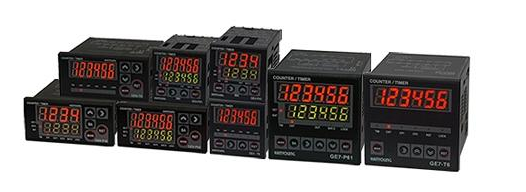**1. Introduction**
Paper cutting machinery is one of the most widely used tools in the printing and packaging industry. A paper cutter is a device designed to cut flat sheets of paper, commonly found in the paper manufacturing sector. These machines are typically categorized into two main types: sickle paper cutters and flat knife paper cutters. Sickle cutters consist of a slitting mechanism made up of an upper and lower blade, as well as a cross-cutting mechanism that includes a rotating long blade and a fixed bottom blade. They can simultaneously process 6 to 10 paper rolls. On the other hand, flat knife cutters feature a blade that can be raised and lowered on a platform, allowing for precise cutting of large sheets into smaller sizes.
Paper cutting machines come in different forms, such as tissue paper cutters and industrial paper cutters, and they vary in terms of automation levels. In China, there are two primary methods for upgrading the feeding and positioning system of paper cutting equipment. One approach involves using a microcontroller unit (MCU) with an inverter, while the other combines an MCU with a servo system. However, both methods tend to cost over 20,000 yuan, making them expensive for many users. Additionally, the MCU systems are usually developed by specialized companies, which means that if a problem arises, it can only be resolved or replaced by the company itself, leading to long maintenance cycles and high repair costs.
HMI, or Human-Machine Interface, refers to the interface between a user and a machine. It serves as a medium for interaction and information exchange, converting internal data into a form that humans can easily understand. HMIs are widely used across various industries where human-computer interaction takes place. The HMI product comprises both hardware and software components. The hardware includes a processor, display unit, input unit, communication interface, and data storage unit. The processor determines the performance of the HMI and is considered its core component. Depending on the HMI's class, it may use 8-bit, 16-bit, or 32-bit processors. The software part consists of system software that runs on the HMI hardware and screen configuration software, such as JB-HMI, which operates under the Windows OS. Users typically create "project files" using the screen configuration software and then download them to the HMI processor via a serial communication port.
**2. Feasibility Analysis of the Transformation**
Most modern PLCs (Programmable Logic Controllers) have built-in high-speed counter functions, capable of processing pulse signals at frequencies up to tens or hundreds of kHz without requiring additional modules. For a paper cutting machine, the feed system does not need extremely high accuracy or response speed. By calculating the relevant parameters of the feed system, an encoder can be selected appropriately to ensure that the pulse frequency meets the accuracy requirements of the PLC’s processing range. During the feeding process, the PLC compares the received pulse count with a set value and adjusts the output frequency of the inverter accordingly, slowing down the feed rate as the set value is approached. This helps reduce system inertia and improves positioning accuracy.

**3. Selection of Main Control Components**
**3.1 PLC Selection**
The device requires several input and output signals, including:
- X0: Pulse Input
- X1: Pulse Input
- X2: Front Limit
- X3: After Limit
- X4: Front Deceleration Position
- X5: Motor Running Signal
- X6: Knife Upper Position
- X7: Knife Protection
- X10: Paper Press Upper
- X11: Photoelectric Protection
- X12: Car Rear Position
- X13: Hands Under the Knife Button
- X14: Stop Button
- X15: Connecting Rod Protection
- X16: Knife Returned in Place
For these input points, the FX1s-30MR PLC was chosen. Since an HMI is being used, manual operations like forward, backward, and tool change are handled through the interface, eliminating the need to occupy additional PLC inputs. The FX1s series is a low-cost option with a maximum of 16 input points, and its high-speed counters can process pulses up to 60 kHz, which is sufficient for the paper cutter’s accuracy needs.
PLCs, or Programmable Logic Controllers, are electronic systems designed for industrial environments. They use programmable memory to store user instructions such as logic operations, sequence control, timing, counting, and arithmetic functions. These controllers manage various types of machinery or production processes through digital or analog input/output signals. Initially known as Programmable Logic Controllers, they were primarily used for replacing relay-based logic control. With technological advancements, their capabilities have expanded far beyond simple logic control, leading to the term "programmable controller," often abbreviated as PC. To avoid confusion with personal computers (PCs), they are still referred to as PLCs.
**3.2 Encoder Selection**
Encoder selection must meet two criteria: the maximum pulse frequency the PLC can handle and the required feed accuracy. We chose an encoder with a resolution of 500 pulses per revolution (P/R). This resolution satisfies both conditions. Calculating the maximum pulse frequency:
- Maximum pulse frequency = 25 revolutions per second × 500 pulses per revolution × 2 (A/B phase) = 25 kHz
Theoretical feed resolution = 10 mm / 500 = 0.02 mm
This means that for every 1 mm of encoder movement, 50 pulses are generated. These pulses are counted separately for the A and B phases, so two high-speed counters are used. The PLC can process up to 30 kHz, satisfying the first condition. The paper cutter’s required cutting accuracy is 0.2 mm, which is fully met by the theoretical resolution.
**3.3 Inverter and HMI Selection**
We opted for Mitsubishi products for both components: the FR-E540-0.75K-CH inverter and the F920GOT-BBD-KC HMI. These components are reliable and compatible with the overall system design.
Mppt Solar Charger Controller,Wind Solar Controller,Mppt Controller,Micro Solar Charge Controller
GuangZhou HanFong New Energy Technology Co. , Ltd. , https://www.gzinverter.com